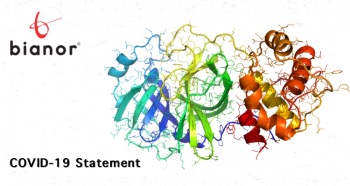5 Most Common Risks When Managing a Software Project and
How to Avoid Them
“A chain is only as strong as its weakest link.” Although it sounds much like a cliche, this phrase has had its proof in real life. We are experiencing this regularly in our surroundings, including in the various projects we manage, supervise, or develop daily.

The above statement is even more valid in software development projects. They consist of plenty and variable links, which are equally crucial for a project’s success. Besides, such projects are even more complicated as they often meet two teams – the software developer and the customer. Naturally, the more variables, the more chances of possible risks appear. If not appropriately handled, such threats could escalate to issues. Unfortunately, in such cases, it is often assumed that the problem is with the development team. While this really could be the case, we should not avoid the fact that, just like in a marriage, the fault most probably is within both parties.
Here is our shortlist of the five most common risks that one should always consider when implementing a software development project. As mentioned above, most of them are valid both for the developer and the customer.
- Budget risk
- Personnel risk
- Miscommunication risk
- Time risk
- Maintenance risk
1/ Budget risk
The budget risk might be the most common risk for all software development projects and is valid for both parties. Underestimating the project could happen from both sides. One option is requesting a product with multiple features, while the purchaser could afford just a small fraction of it. Another is when a developer is offering a lower quote just for the sake of winning the project.
Having realistic requirements from one side and mindful awareness of own ability, on the other, is essential, especially when discussing finances.
2/ Personnel risk
The Personnel risk could be equally affecting both parties. Proper planning of the human resources and the interchangeability of key project figures is vital. Otherwise, one could be facing late delivery caused by HR problems in the development team or untimely response and lack of understanding from the customer’s side.
A way to avoid personnel risk is sharing knowledge among all team members, and involving them in the overall planning. Never counting on only one person is another point that might be critical for the business.
3/ Miscommunication risk
Effective communication is fundamental in our everyday life. In business, it could determine success. Proper and timely communication is critical not only among the team members but between the parties.
Open communication between the two parties and timely sharing of information regarding the objectives, goals, changes, or potential problems will reduce the risk of miscommunication and undesirable surprises.
4/ Time risk
Time risk often appears from improper planning, excessive perfection, or change requests. Whichever the reason is, the answer is – flexibility.
Allow your team to be flexible and able to react to the changing situation. Allocating on Time the proper Personnel, and responding to the project’s needs is crucial for the project’s success.
5/ Maintenance risk
A software development project does not end with the completion of the project. Any software product is a living creature that breathes, grows, and evolves together with the surrounding environment. It needs attention, constant care, and a new pair of shoes, just like a growing kid. Even the most successful software product development could turn into a failure if there is no proper maintenance.
Avoiding the maintenance risk is determined by choosing the right partner to guarantee long-term support and a practical and transferable internal knowledge-base system. The last one is equally valid for the client, as well as the software developer.
Conclusion
A software development project does not differ much from any other project. Being a large construction or a simple repair at home, all have a scope, budget, and schedule. If any of these three needs adjustment, you have most likely fallen into the trap of the risks we discussed.
Have realistic demands and promises; plan all your resources properly; make sure you articulate clearly all the information; stay flexible, and look long-term. These are the keys to avoiding the five most common risks in a software development project.
Read more about the software development services that we have been providing for more than 20 years and learn how we could help your business.
























































